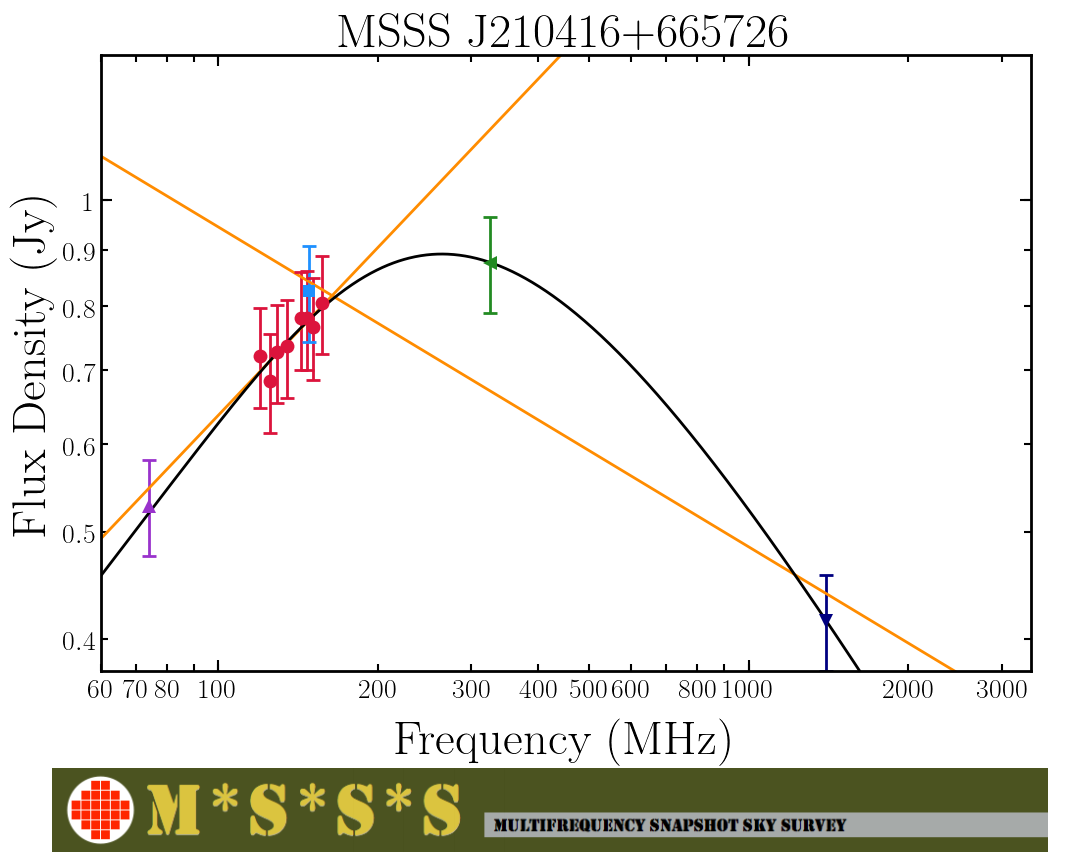Daily Image
11-07-2018LOFAR MSSS: searching for peaked-spectrum sources
| Submitter: | Christiaan Bozon, Joe Callingham, Jess Broderick |
| Description: | For the past three months, Christiaan Bozon, a bachelor's student at the University of Amsterdam, has been working with Joe Callingham and Jess Broderick on finding peaked-spectrum sources in the LOFAR Multifrequency Snapshot Sky Survey (MSSS). Peaked-spectrum sources are postulated to be the young, compact precursors of larger-scale radio galaxies. MSSS has the potential to be particularly advantageous in identifying peaked-spectrum sources: rich spectral information is provided by eight, 2-MHz bands over the frequency range 119-158 MHz. First, a number of quality control tests were performed, with a particular focus on the flux density scale of MSSS. Then, using 10 per cent of the survey area (about 2300 square degrees), a pilot sample of 234 peaked-spectrum sources was selected by developing a series of selection criteria. The radio spectrum shown above is one such example. The data points are as follows: 74 MHz (VLSSr; purple), 119-158 MHz (MSSS; red), 147 MHz (TGSS; light blue), 325 MHz (WENSS; green), and 1400 MHz (NVSS; dark blue). The two orange lines are separate single-power-law fits to (i) all of the MSSS data, and (ii) the top two MSSS frequency bands as well as NVSS. The black line is a fit to all data points; the turnover frequency is at 265 MHz. Studies of large samples of peaked-spectrum sources will help us develop a better understanding of the absorption mechanisms resulting in spectral turnover, which will in turn lead to a more refined view of the evolution of active galactic nuclei. |
| Copyright: | LOFAR MSSS team |
| Tweet |  |
